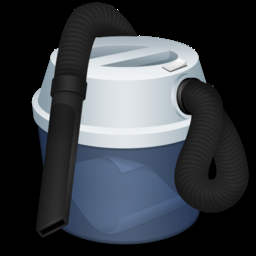
- Mac u torrent cache folder how to#
- Mac u torrent cache folder manual#
- Mac u torrent cache folder download#
- Mac u torrent cache folder mac#
On laptops with Windows OS, there are several types of cache. For your knowledge, here are some of these types of cache: That is what makes the laptop slow, so you need to clean the cache to speed up the laptop’s performance so that it is no longer slow.

Over time you use your laptop, cache files will definitely accumulate more and more. This cache file will then load memory.
Mac u torrent cache folder download#
With the cache, on the second and subsequent visits, the computer does not need to download data, it can immediately display web pages.
Mac u torrent cache folder how to#
Mac u torrent cache folder mac#
Too many temporary files may result in your Mac performing not the way you expect it to.The first time you open a website, the computer will download all the data on the website and then display it.
Mac u torrent cache folder manual#
It doesn’t matter which way you choose - automatic or manual - clearing temporary files is what your Mac needs regularly. Select Clear Data in the Cookies and Site Data section.Navigate to Privacy and Security settings.Select More tools - go to Clear Browsing Data.Click on the three dots in the upper right corner when in Chrome.Click Remove All - confirm and click Remove Now Clear browser cache in Chrome: Navigate to the Privacy tab - click Manage Website Dataģ.

Open Safari - click on the Safari tab in the menu bar - PreferencesĢ. This is especially effective if you use multiple browsers.ġ. If this sounds too complicated or time-consuming, you can start by clearing your browser cache. Note: Before deleting anything - do make sure you know what you’re about to remove. Highlight the temporary files you want to delete-move the selected files to Trash Open Finder - in the menu bar click on Go- Go to Folder-type in ~/Library/Caches/ģ. To find and delete temporary files on your Mac:Ģ. It’s called the Caches folder and contains all temporary files along with the cached ones. Let’s locate the folder with temporary files on your Mac. How to find and remove temporary files on Mac manually Run the Safe Cleanup feature to find and delete temporary files eating up your disk space. MacKeeper has detected around 4GBs of log and cached files.

Take a quick look at the screenshot above. If you’ve selected to empty Trash - click Empty Trash to confirm the cleanup Check all items or review the ones you want to removeĦ. Click Start Scan - wait for the scan resultsĤ. How much do you think it’d take to have the Safe Cleanup feature in MacKeeper detect and clear temp files? Just a few clicks within a few minutes:ģ. Delete temporary files with MacKeeperĭeleting temporary files manually is a time-eater. Plus, the browsers you use, create temp files so the websites load without delay.īut if you have a considerable amount of apps, visit dozens of websites daily and feel your Mac has become sluggish - deleting temp files is what your Mac needs. Apps on your Mac create temp folders, which help apps to work faster.

The quantity of temp files depends on the number of apps you use and the number of websites you visit. Temporary files mostly come in the form of apps, systems, browser cache, and log files. This article will talk about what’s behind temporary files and how to delete them effectively. Often overlooked, they may waste GBs of precious disk space. Temporary files on Mac are not the first thing that comes to mind when you decide to clean up your Mac. How often do you clean your Mac? We’re just asking because junk files, duplicates, and temporary files may occupy more disk space than you can even imagine!ĭownload MacKeeper to do the cleanup more often and also get a daily report to see how your Mac is doing.


 0 kommentar(er)
0 kommentar(er)
